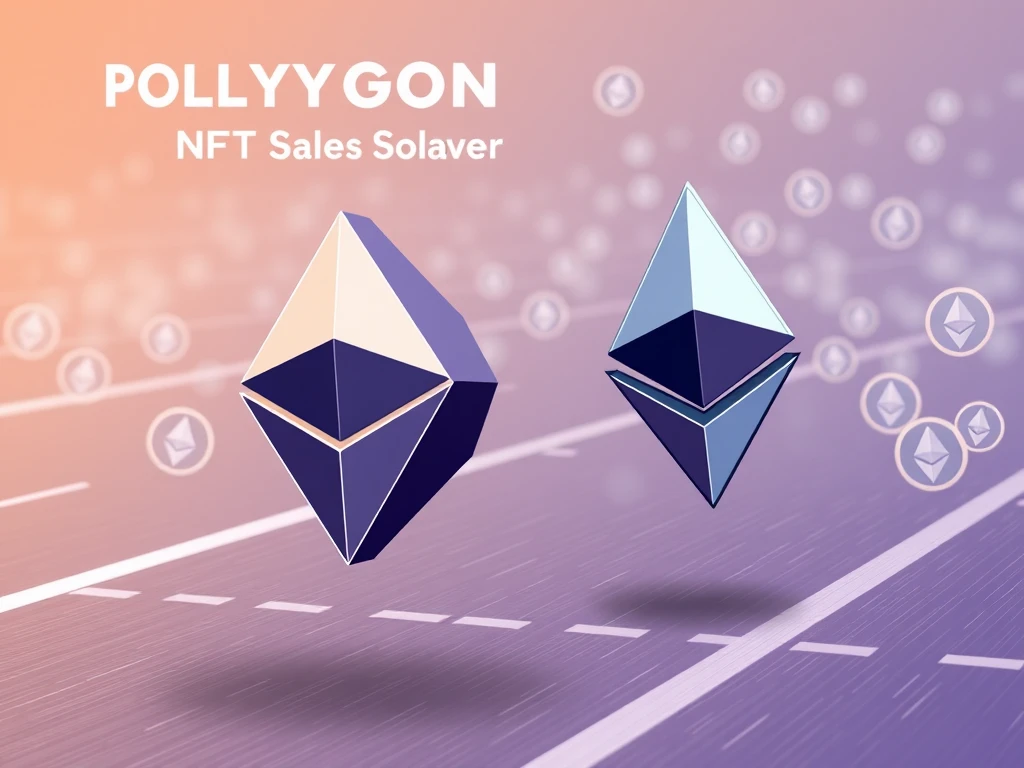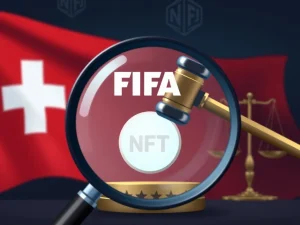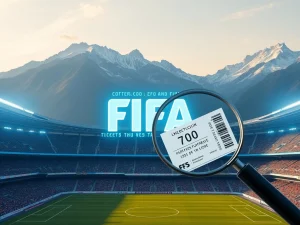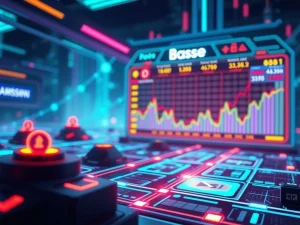Explosive Growth: Polygon NFTs Dominate Ethereum in Weekly Sales Chart

Hold onto your digital wallets, NFT enthusiasts! The crypto collectible world has just witnessed a significant shift. For a long time, Ethereum has been the undisputed king of NFTs, but recent data reveals a surprising challenger has emerged. Get ready to explore how Polygon NFTs have spectacularly overtaken Ethereum NFTs in 7-day sales volume, marking a potential turning point in the NFT landscape.
Polygon NFTs Ascend to the Top Spot in NFT Sales
In a remarkable turn of events, Polygon NFTs have surged ahead, claiming the number one position in digital collectible sales. Over the past week, these NFTs experienced an impressive 20% increase in sales volume. According to data from CryptoSlam on April 22nd, Polygon’s NFT sales reached a staggering $22.3 million. This figure represents a significant 24% of the total NFT sales volume for the week, which amounted to $92.9 million across all blockchains. Furthermore, the Polygon network saw a massive influx of new participants, with over 39,000 NFT buyers joining the ecosystem within the week. This represents an 81% jump in buyer activity compared to the previous week, showcasing the growing interest and momentum behind Polygon-based digital collectibles.
While Ethereum NFTs have long been synonymous with the digital art and collectibles space, they now find themselves in the second position. Ethereum recorded a respectable $19.2 million in NFT sales volume during the same period. Following closely behind were Mythos Chain with $14.3 million and Bitcoin-based collections at $14.1 million. This shift in rankings highlights the dynamic nature of the NFT market and the increasing competition among different blockchain platforms.
| Blockchain | 7-Day NFT Sales Volume |
|---|---|
| Polygon | $22.3 Million |
| Ethereum | $19.2 Million |
| Mythos Chain | $14.3 Million |
| Bitcoin | $14.1 Million |
Top blockchains by seven-day NFT sales volume. Source: CryptoSlam
The RWA NFT Revolution: Courtyard Drives Polygon’s Dominance
What’s the secret behind Polygon’s meteoric rise in NFT sales? The answer lies in the burgeoning trend of Real-World Asset (RWA) tokenization within the NFT space. This surge is largely attributed to the remarkable performance of a single RWA NFT collection hosted on the Courtyard marketplace. RWA tokenization is essentially the process of representing tangible assets on the blockchain. Think of it as creating digital twins for physical items like fine art, real estate, or even collectible cards. This process enhances accessibility and opens up new trading avenues for these assets within the digital realm.
In simpler terms, RWA tokenization bridges the gap between the physical and digital worlds, allowing you to own, hold, and trade real-world assets as digital tokens on a blockchain. Data from CryptoSlam clearly indicates that the explosive sales of Courtyard NFTs are the primary catalyst for Polygon’s recent NFT surge. The Courtyard collection alone achieved a sales volume of $20.7 million in the past week. This impressive figure dwarfed the sales of even the most established and popular NFT projects during the same period, underscoring the immense impact of RWA NFTs on the market.
| NFT Collection | Sales Volume |
|---|---|
| Courtyard | $20.7 Million |
| Other Top NFT Projects | Less than $20.7 Million Combined |
Courtyard NFT collection tops digital collectible sales volume list. Source: CryptoSlam
What is Courtyard and Why is it Fueling the NFT Craze?
Courtyard is not just another NFT marketplace; it’s a specialized platform focused on Real-World Asset NFTs, specifically for graded physical card collections. Imagine tokenized versions of your prized Pokémon, basketball, or baseball cards – the very cards that hold immense nostalgic and collector value. Courtyard specializes in these types of collectibles, bringing them into the digital age.
The platform’s unique operating model involves securely storing and insuring these tokenized cards within a vault managed by a professional security company. This means that each NFT on Courtyard is physically backed by a real, tangible collectible card. When a user purchases a Courtyard NFT, they have the option to redeem the physical card at any time. Upon redemption, the NFT is burned, effectively removing it from circulation and ensuring that the digital token represents a real-world transaction. This feature adds a layer of trust and tangibility that resonates strongly with collectors, driving significant interest and investment in RWA NFTs.
The Broader RWA Narrative and Its Impact on NFTs
The rise of Courtyard NFTs and Polygon’s subsequent surge in sales are not isolated incidents. They are part of a larger, more significant trend – the growing prominence of Onchain RWAs. The first quarter of 2025 has witnessed a powerful narrative around Real-World Asset tokenization, and its impact is now clearly being felt within the NFT market. Data from RWA.xyz reveals the impressive growth of this sector. Tokenized assets have already reached a valuation of $21.2 billion, with a community of over 97,000 asset holders. It’s important to note that these figures exclude the massive value of stablecoins, which currently stands at a staggering $227 billion. The convergence of RWAs and NFTs is opening up exciting new possibilities and demonstrating the real-world utility of blockchain technology beyond purely digital assets.
Conclusion: A New Era for NFTs?
The shift in NFT sales, with Polygon NFTs overtaking Ethereum collectibles, signals a potentially transformative moment for the digital asset space. Driven by the innovative approach of Courtyard and the broader RWA tokenization trend, Polygon has demonstrated the power of bridging the gap between physical and digital collectibles. As the RWA narrative continues to gain momentum, we can expect to see further evolution and diversification within the NFT market. Will Polygon maintain its lead? Will Ethereum reclaim its top spot? Or will other blockchains emerge as contenders in the RWA NFT race? One thing is certain: the NFT landscape is more dynamic and exciting than ever before, and the rise of RWA NFTs is a trend to watch closely.









